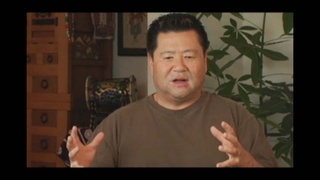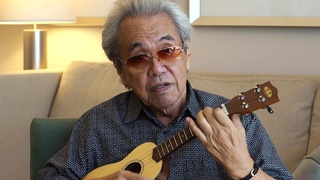Interviews
Ocean of Sound: Taiko in the Womb
I think from when we first starting playing it at Buddhist temples and different venues, [we] found people coming up to us afterwards and saying, “Oh that was incredible!” And juiced. You could tell people were just energized by it and that we would be energized by playing, too. Some kind of primal thing is happening here.
I started thinking about. This was back in ’76 or so, I shared a house with two women. One of the women was pregnant and had her child. I happened to be in Japan at the time. When I came back from Japan, she had had her child. She had somehow—somebody gave her, or she had found—this album, 33 1/3 album, Dr. Muraoka’s “Sounds from the Womb.” One whole side of this album, the 33 1/3 record, was recorded sounds of the womb. Ba-doom, thumb, eghhh, scweee, scweee, scweee… You know, all of these incredible thumping and gurgling and gooojin, gooojin kind of sounds that for nine months as babies, we’re exposed to. Then the written thing says then you’re born into this world and all of a sudden, it’s quiet, right? In the hospital room or whatever. People step lightly around babies, right? There might be a sudden bedpan falling—kgnnn. And then the baby’s going to freak out, right? So as embryos, as these neonatal form kind of thing, we are exposed to this ocean of sound. And maybe, when we hear Taiko, we go back to that.
There are stories in Japan, too, of babies falling asleep with this big taiko going off. What is that? That’s a interesting connection. But I think it has to do with that sound environment that we’re in when we’re children. We joke about the fact that Masato, when he was a baby, when was in Jeanne’s womb, was exposed to Taiko. Yeah, yeah. But in a way, all of us are exposed to Taiko, or something like Taiko. That energy, that juice that happens inside of the womb is related to the sound of Taiko. Theory. That’s the Moon Man theory.
Date: December 10, 2004
Location: California, US
Interviewer: Art Hansen, Sojin Kim
Contributed by: Watase Media Arts Center, Japanese American National Museum
Explore More Videos

Decision between becoming a minister or musician
(b. 1949) Musician and arts educator and adminstrator.

Japanese American taiko is not Japanese taiko
(b. 1949) Musician and arts educator and adminstrator.

Parents didn't accept me playing taiko in the beginning
(b. 1949) Musician and arts educator and adminstrator.

Tango makes him to stay in Argentina (Spanish)
(1925-2014) La Plata Hochi, Journalist


Dreamed of becoming an Enka singer
(b. 1981) Enka Singer

His clothes are part of his identity
(b. 1981) Enka Singer

Hopes everyone pursues their dreams regardless of race or heritage
(b. 1981) Enka Singer


The first concert in the United States (Japanese)
(b. 1981) Enka Singer


How he got on the All-Navy show on Ed Sullivan
(b. 1934) Ukulele player from Hawaii



